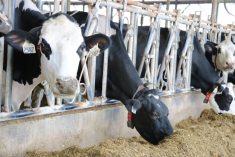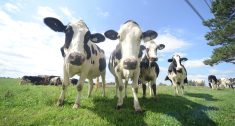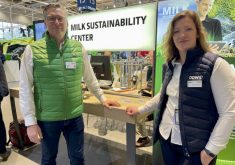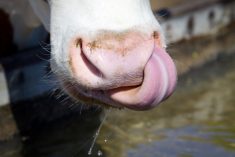Dairy emissions of greenhouse gases could be reduced by 60 per cent in the coming years just from nutrition strategy changes.
That’s the conclusion of a recent review of research by Alexander Hristov, distinguished professor of dairy nutrition in the Department of Animal Science, at Pennsylvania State University.
The completed the review at the request of the Journal of Dairy Science.
Read Also
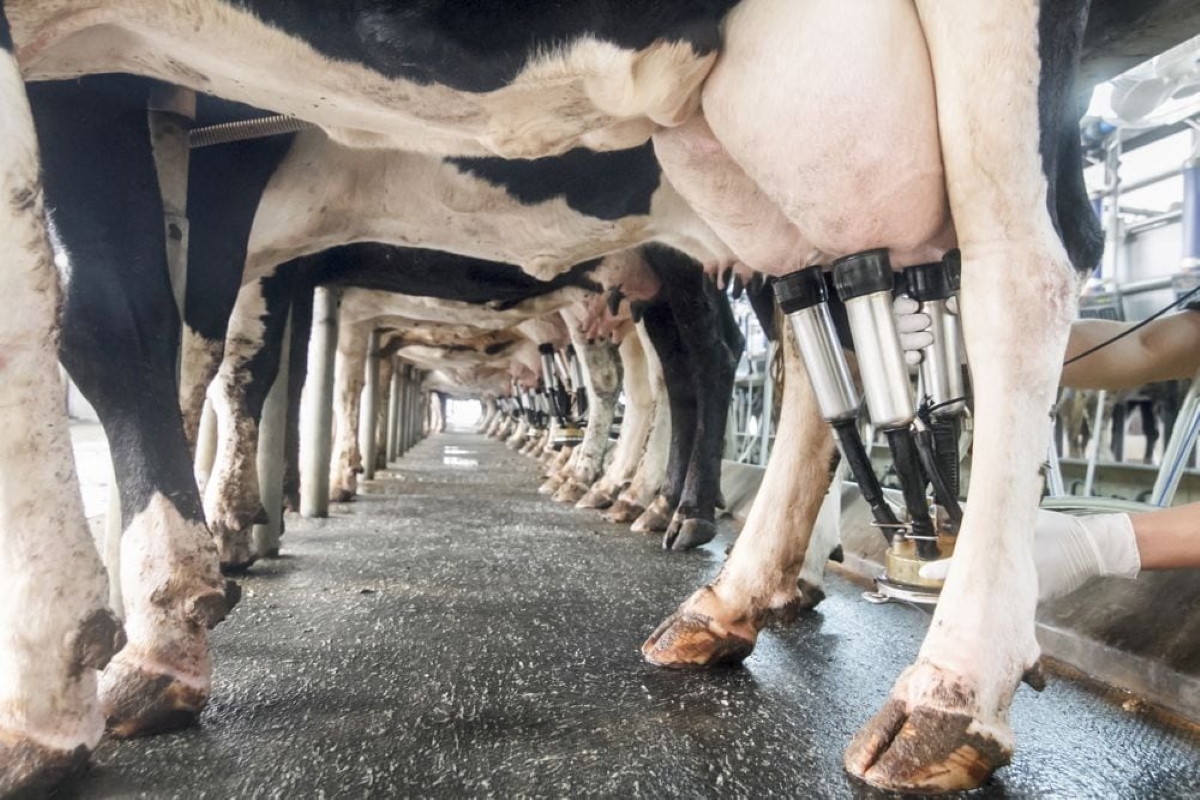
Farm gate milk price to rise in 2026
The Canadian Dairy Commission will raise its farm gate milk price by 2.3255 per cent in February, the Crown corporation announced on Friday.
Research into reducing greenhouse gas from livestock has increased exponentially as the dairy and agriculture sectors work together toward shared sustainability and efficiency goals.
While this progress has been made in all areas of dairy science research, from genetics to animal health and welfare, dairy nutrition has emerged as a particularly impactful area for emission reduction.
Methane (both enteric methane produced during digestion and methane from manure) is the critical greenhouse gas that makes up most of the dairy industry’s environmental footprint.
“There are two main ways to tackle enteric methane emissions through nutrition: adjusting an animal’s diet or adding in specific new ingredients,” says Hristov.
The review looks at the latest findings on diet reformulation, including adjusting concentrate feeds, feeding corn versus grass and legume silage, and using alternative forages such as sorghum or plantain.
Intensive dairy farms already have efficiency as a hallmark of their diets as nutritional professionals work with farmers to create the most practical diet possible.
“Diet reformulation depends on a farm’s unique scenario to be an effective tool. If a dairy has room for efficiency and productivity improvements, for example, balancing diets can be helpful,” he says.
That leaves feed additives, new ingredients supplemented in small amounts to a dairy cow’s existing diet, to reduce methane produced during digestion. Based on existing research, the most promising additives are seaweeds and 3-nitrooxypropanol (3-NOP).
Red seaweed varieties, for example, contain bromoform, an active compound that has been effective in reducing methane emissions in several studies. Dr. Hristov adds, “Bromoform appears to be able to achieve a 30 per cent to 50 per cent emissions reduction, but whether this effect can be applied broadly and consistently needs more research.”
The strongest feed additive contender to emerge is 3-NOP. According to Hristov, “Its efficacy has been proven in numerous controlled and independent experiments, and 3-NOP is currently the only available option headed to market for dairy operations looking to use additives to reduce emissions.”
Hristov also highlights two areas that could benefit from more research as the dairy sector works to move the sustainability needle forward: reducing methane emissions from cow manure and studying whether nutrition strategies can be paired together synergistically.
“In theory, practices with different modes of reducing methanogens could work together to boost overall mitigation.”
The article cites a best-case scenario in the literature in which a 20 per cent to 30 per cent reduction by a feed additive could be paired with another 10 per cent to 20 per cent reduction from a second feed additive, plus, perhaps, another five per cent to 10 per cent from improvements in forage quality and diet manipulation, adding up to a substantial overall impact in lowering methane.
While Hristov was clear that the pathways toward dairy sustainability are still in flux—and that no one solution will work for every dairy system and every farm—advances in dairy nutrition will be an essential component in the methane-reduction mix. He concludes, “If currently available mitigation practices prove to deliver consistent results, and novel, potent, and safe strategies are discovered, nutrition alone can deliver up to a 60 per cent reduction in enteric methane emissions and pave the way for a more sustainable dairy sector.”




